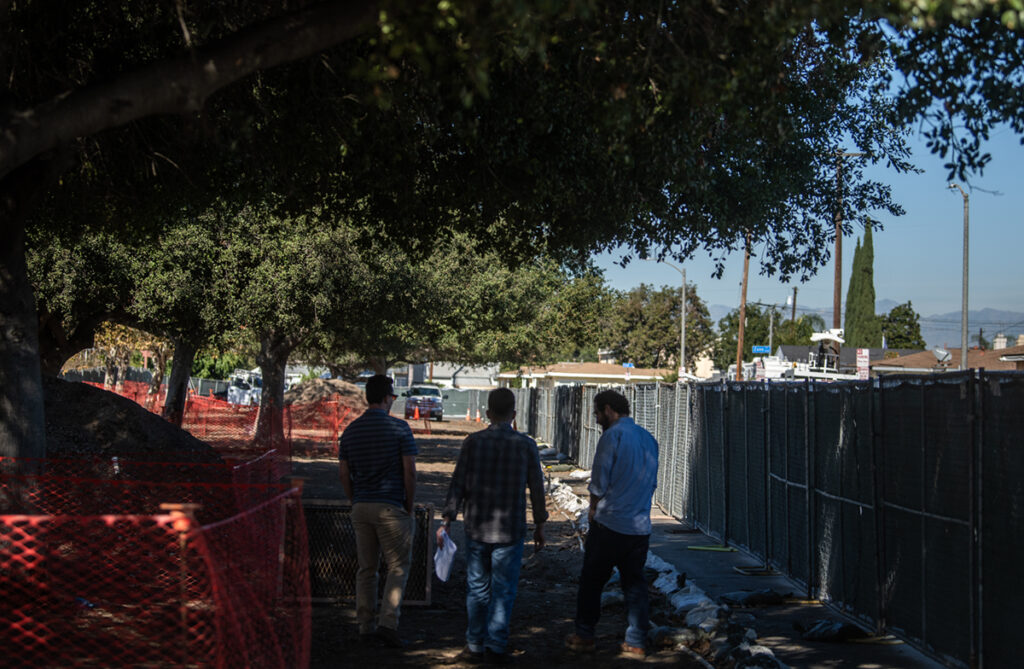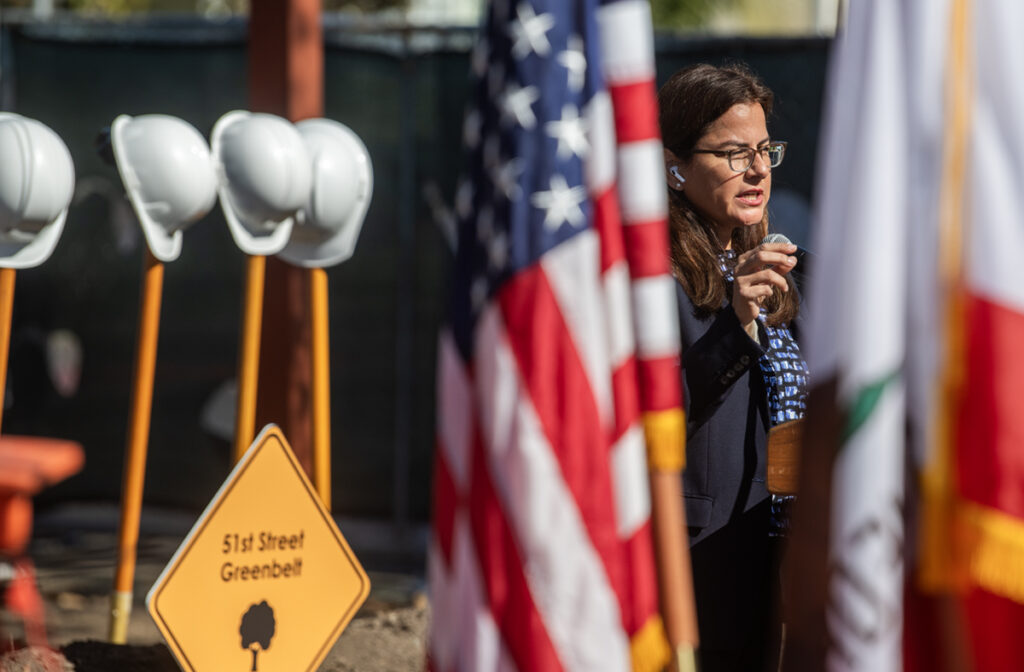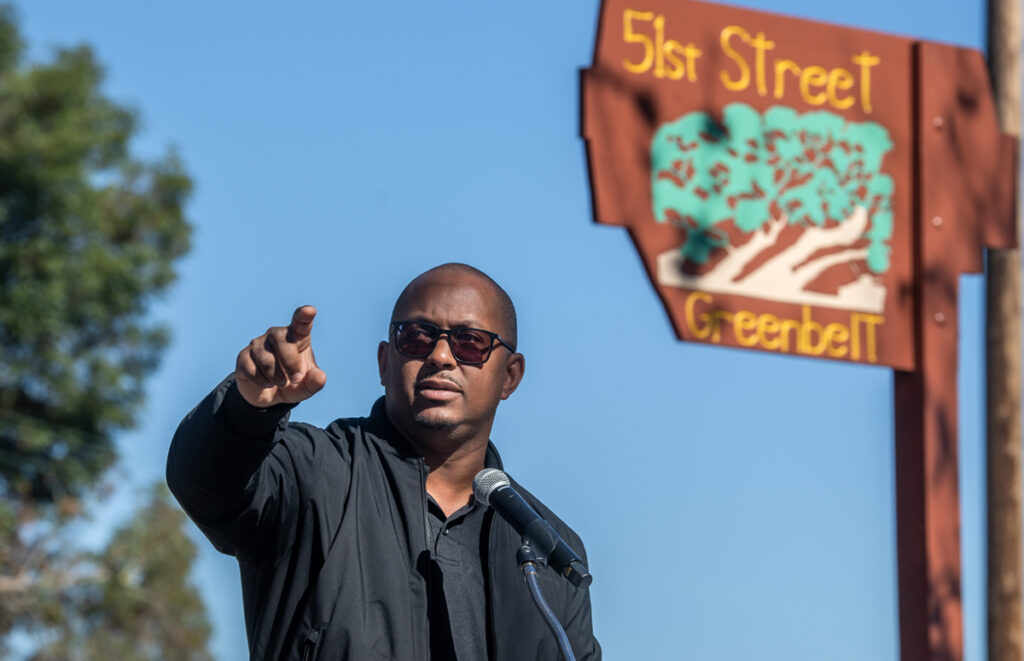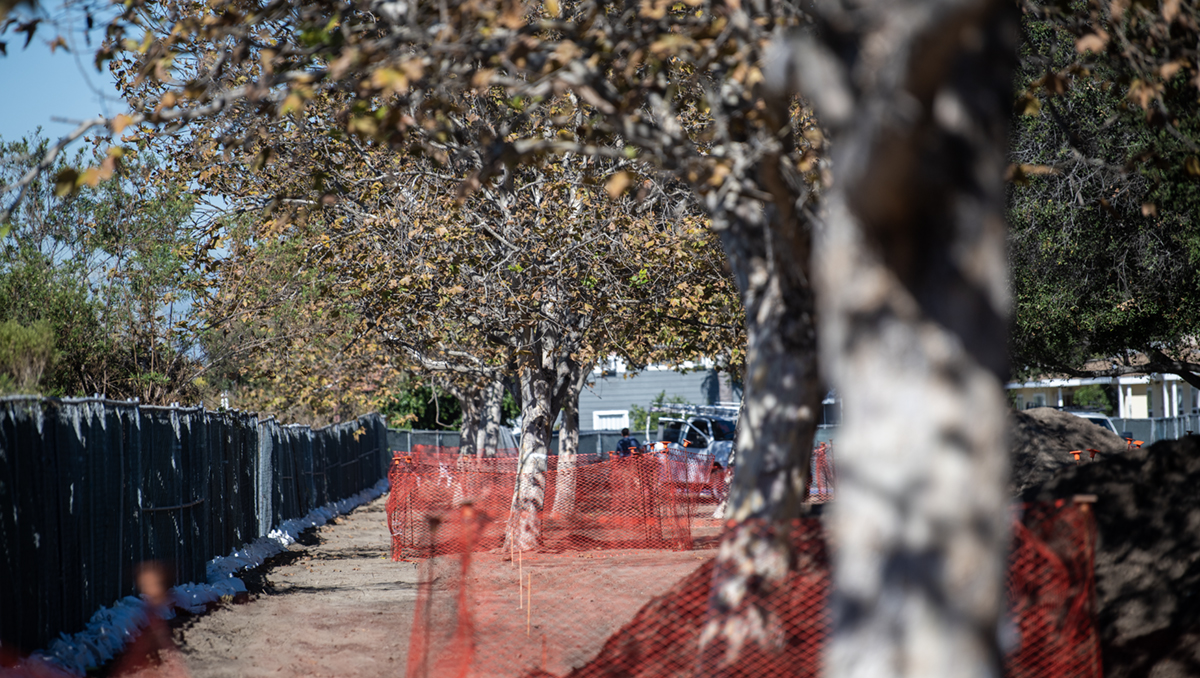Long Beach leaders broke ground Monday on a $6 million project to give new life to an undeveloped acre in North Long Beach.
The 51st Street Greenbelt Project will turn a stretch of land on De Forest Avenue between 51st and 52nd Streets into a park featuring pedestrian and cycling paths, fitness equipment, play structures, native plants and green infrastructure.
The greenbelt, which is part of Long Beach’s infrastructure investment plan, is scheduled to be completed by fall 2026, the project manager said. In recent years, the city has expanded recreational space in the lower Los Angeles River region by dozens of acres. This project represents the latest effort to create more green space in the area.
During Monday’s groundbreaking ceremony, Rep. Nanette Diaz Barragán, whose Congressional district includes North Long Beach, stepped up to the mic next to a large pile of dirt. “When I was a kid, I didn’t have a park nearby,” she said. “I had to get on a bus to go play Little League and baseball.”
Barragán’s commitment to broadening access to outdoor recreational space, especially for park-deficient neighborhoods in Long Beach, helped secure millions in federal funding for the project.
The city will combine those dollars with grants and city funds to build a park that addresses the community’s needs, identified through surveys and meetings, said Councilmember Tunua Thrash-Ntuk, who represents the 8th City Council District.

Thrash-Ntuk said the park is intended to serve neighbors of all ages — especially children, as the lot sits near several schools. “Today, I’m pleased to say that one of the district residents that I brought with me is an avid user of local parks, and that’s my son,” she said.
The greenbelt aims to improve community physical, mental and environmental health, said Stephen Scott, acting director of the Department of Parks, Recreation and Marine. The census tract where the park will be built is among the 5% most environmentally burdened and vulnerable areas in the state, according to CalEnviroScreen, a tool developed by the California Office of Environmental Health Hazard Assessment.
The Long Beach Climate Action Plan acknowledges that due to “long-standing discriminatory practices,” low-income communities and communities of color in Long Beach are more likely to live in heavily polluted, climate-vulnerable areas without access to parks.

Project manager Tina Cheng said the greenbelt will mitigate some of these issues with new and existing vegetation. The site already has mature, native trees — oaks and sycamores. “We’re lucky to have them, because they’re huge,” said Mina Roades, a landscape architect with design studio City Fabrick. “Otherwise, this would be a park with a bunch of little sticks.”
The site currently captures its own stormwater, Roades said; “We’re enhancing it with a bioswale,” a vegetated channel that treats and controls stormwater, she added.
Though ground officially broke Monday, “This work has been underway for a couple of years,” said Joshua Hickman, acting director of Public Works. His team has already completed work on the hardscape — the curb, gutter and sidewalk — to improve accessibility to the eventual park. Once the project is complete, the Public Works team will restore the pavement — and parking — adjacent to the greenbelt, an effort to create a space that “integrates seamlessly with all of the neighborhood,” Hickman said.

“I can’t say how proud I am as a North Long Beach resident to see this project move forward,” said Mayor Rex Richardson. He joined a line of city officials, who donned hard hats and tossed shovelfuls of dirt into the air.

